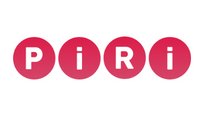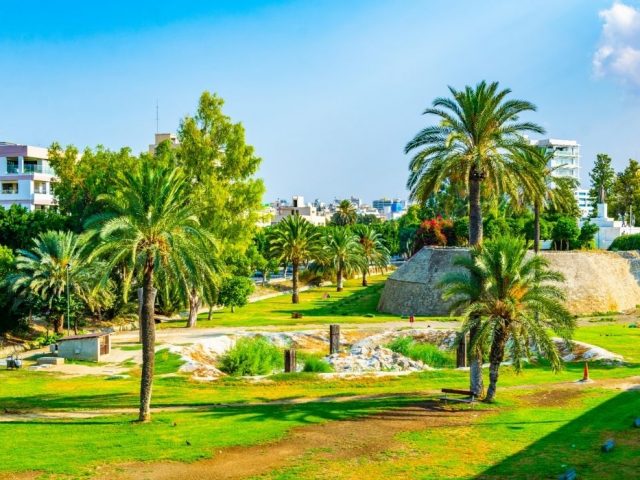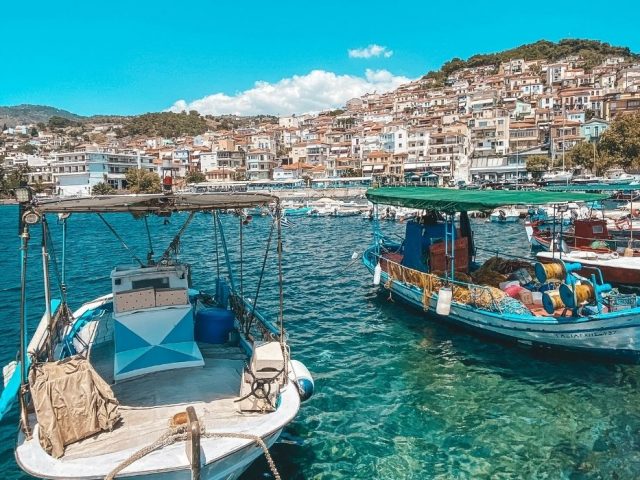Hello travelers! Today, let’s visit a modest yet fascinating island. That’s right, Berlin’s famous Museum Island. Berlin Museum Island represents the vast culture of Berlin all on its own. That’s why it should definitely be on your must-see list before you venture out for some evening fun 🙂
Before we delve into the details, let me tell you this: Berlin Museum Island was officially recognized as a UNESCO World Heritage site in 1999. It houses invaluable artworks and traces of culture that should not be underestimated. Additionally, the world-renowned Berlin Cathedral (Berliner Dom) being located on this island turns it into a true treasure trove.
Before we begin, let me remind you: Don’t forget to download the Piri Guide mobile app for a step-by-step personal and digital tour guide experience of Berlin Museum Island! 😊
Where is Berlin Museum Island?
Berlin Museum Island, or Museumsinsel in German, is located in the capital city of Germany, Berlin, as you may have guessed from its name. To be more precise, it is situated on the famous Spree River, towards the northern part of the island.
How to Go to Berlin Museum Island?
To reach the island, you have various transportation options from buses to trams. Once you get off at the Alexanderplatz stop, you can enjoy a leisurely walk while taking in the sights of the city. Along the way, you’ll come across various markets and exhibitions, so it’s definitely not a boring stroll.
Must-Visit Museum in Berlin Museum Island
We have listed below the must-see places on Berlin’s Museum Island. However, let us remind you that you can find so much more on the Piri mobile app. Piri offers you the most beautiful routes for Berlin’s Museum Island, detects your location, and automatically starts telling the stories of where you are. All you have to do is put on your headphones and follow the route. Don’t start exploring Museum Island without downloading your personal mobile tour guide that adapts to your preferences and pace! 😊
Palace Bridge

First stop: Palace Bridge. Here you’ll find sculptures made by Karl Friedrich Schinkel’s students. These sculptures, carved by names like Strack, Stüler, Rauch, and Gropius, are truly remarkable! Eight different artists created eight separate sculptures, symbolizing the life story of a man. It represents the journey of a child raised to become a warrior!
Der Lustgarten Sign
The paintings you will see here depict the history of Lustgarten. For example, the second painting shows the new dome that was built during the reign of the famous Prussian king, Frederick II.
In the third painting, you’ll see a museum alongside Lustgarten. This museum is actually the oldest museum in Berlin. And once again, it was constructed by the legendary Schinkel.
The surroundings of Lustgarten are reminiscent of the former monarchy that once ruled Brandenburg’s history.
The dome of Berlin was built in 1905 by Julius Raschdorff. The building is as magnificent as a cathedral because the royal family used the dome, which you see, as a church for weddings and baptisms in the past.
Der Lustgarten

Berlin Cathedral is important not only architecturally but also religiously. This wonderful design is actually Berlin’s response to Saint Peter’s in Rome and Saint Paul’s in London. That’s why it is considered a representative of the Bible and a symbol of Protestantism. You can click here to check out our London blog.
While there is an entrance fee to access the dome, let us share a little secret with you: You can attend the daily midday prayers without paying any fee. Feel free to enter and explore the reconstructed interior of the dome with the melodies of the magnificent organ playing for free! You can click here to view the visiting hours of Berlin Cathedral on their official website.
Altes Museum

The Altes Museum, also known as the Old Museum, is the oldest museum in Berlin. The traces of the Berlin War, with bullet holes, can still be seen on the 18 columns at its entrance, preserving its historical significance.
Inside the museum, you’ll find beautiful sculptures from both the Greek and Roman periods. The most impressive ones are the two Victory Goddess Nike statues with a praying child statue in the circular area between them. This child statue, Die Betende Knabe, served as inspiration for the construction of the Altes Museum.
There’s also a fascinating collection of ancient coins on display. You can take a look at coins dating back to the 7th century BCE!
Before we continue, let us remind you: Don’t waste any more time and continue exploring at your own pace with your personal guide in your pocket by downloading the Piri Guide mobile app!
Altes Museum Upstairs
This place used to be a market like Covent Garden in London, but it’s no longer used for that purpose. In medieval Berlin, this was a place where people would take a stroll and socialize, where the community would come together. Nowadays, one of the functions of this area seems to be reminding us of Mr. Hacke, who played a role in shaping this neighborhood, just like Müller gave his name to Müllercher Markt. Isn’t that interesting?
Although this area is where Berliners live, it is quite touristy. It encompasses many aspects of city life, such as restaurants where you can enjoy delicious meals, art galleries, and boutique shopping venues.
Museum Island

The National Gallery
The first stop at Museum Island: The National Gallery, a captivating building with Corinthian-style columns and the statue of 4th Frederick William. Here, you will find the most exquisite works by Caspar David Friedrich, Eduard Gaertner, Karl Friedrich Schinkel, Max Liebermann, Max Beckmann, Adolph von Menzel, Monet, Manet, and Weissmuller. These artworks are truly a sight to behold.
Neues Museum (New Museum)
At the entrance, you’ll also find a photo of Nefertiti. As you can imagine, inside the museum, Nefertiti is exhibited, and believe me, you wouldn’t want to miss the opportunity to see her. 🙂 The museum, designed by David Chipperfield, is just as fascinating on the inside as it is on the outside. Inside, you’ll discover a dazzling collection of Ancient Egyptian papyri. The oldest artifact you can see is a stone axe from the Stone Age, dating back a whopping 700,000 years!
Pergamon Museum
Inside, there is a highly successful reproduction of the ancient Pergamon Altar on display. Additionally, a section of the legendary Ishtar Gates of Babylon can be found inside. The grand museum also houses a section dedicated to showcasing numerous artifacts from the Ottoman Empire.
Hackescher Markt

This place used to be like Covent Garden in London, a bustling market, but it is no longer used for that purpose. In medieval Berlin, this was a place where people would take walks and socialize, spending time together. Nowadays, this area serves another function, and it reminds us of Mr. Hacke, who contributed to this neighborhood, just like Müller gave his name to Müllercher Markt, Hacke gave his name to Hackescher Markt. Interesting, isn’t it?
Although this area is where Berliners live, it is quite touristy. It offers a variety of things related to urban life, such as restaurants where you can enjoy delicious meals, art galleries, and boutique shopping venues.
That’s all from us for Berlin’s Museum Island. If you’re interested in exploring more about Berlin and taking a tour with our guide Mark Müller, feel free to download the Piri Guide mobile app and get started right away!




